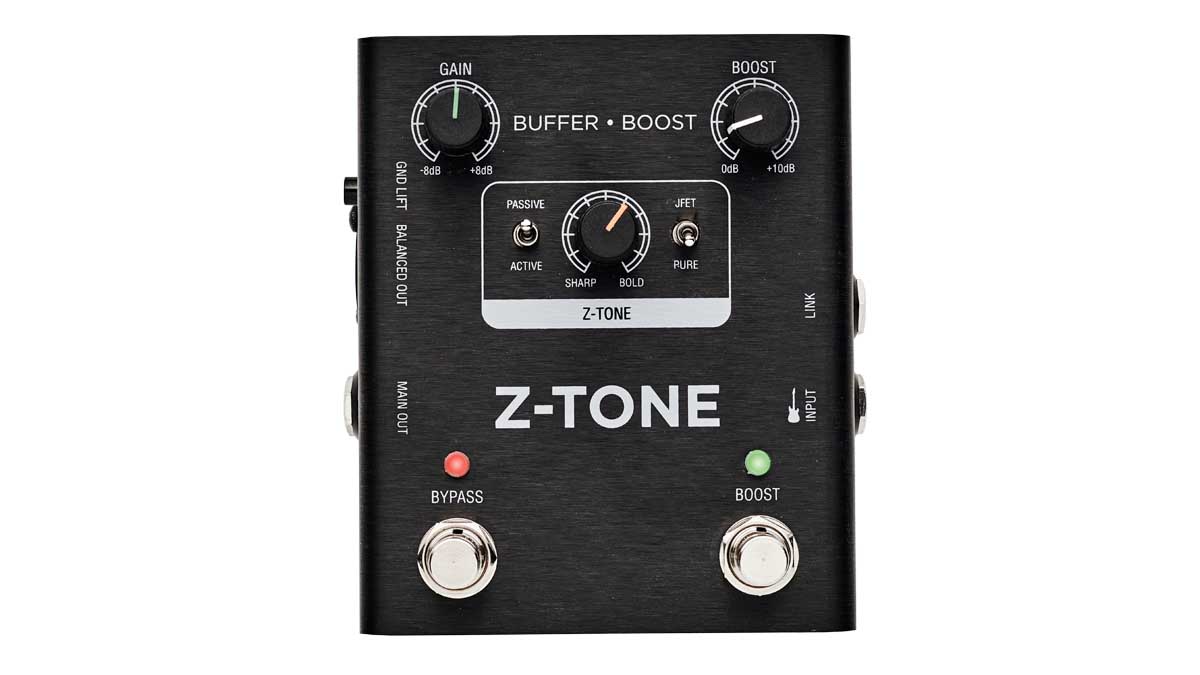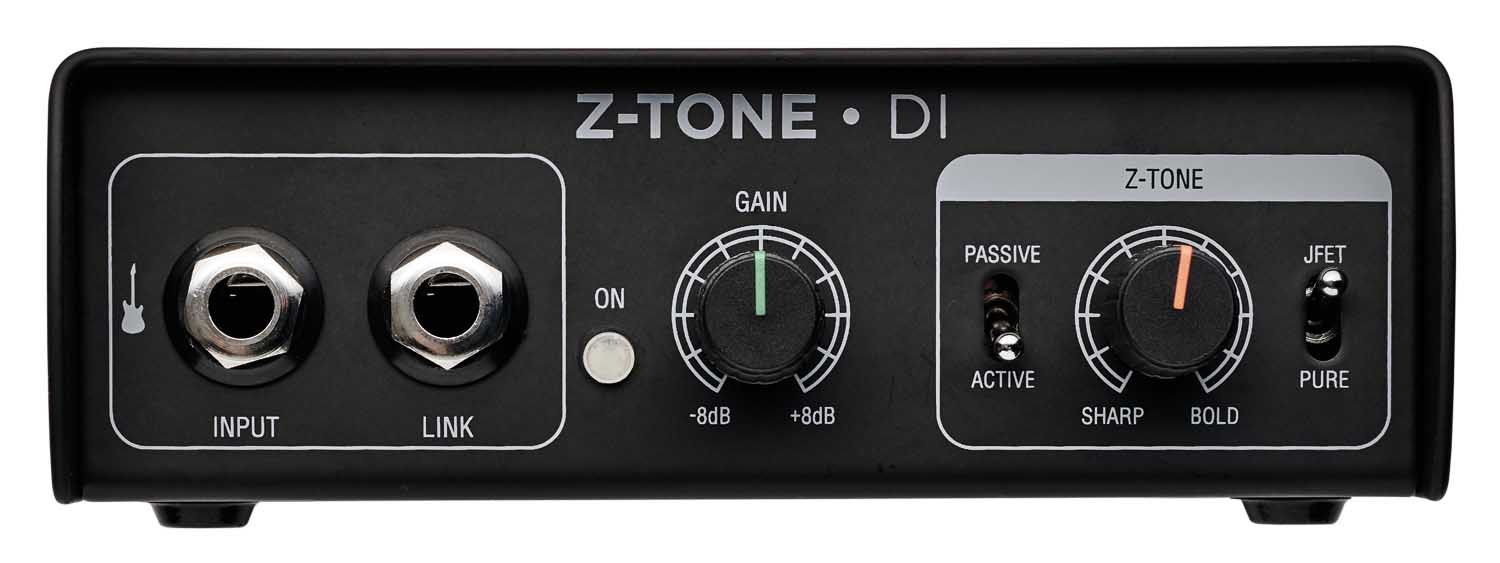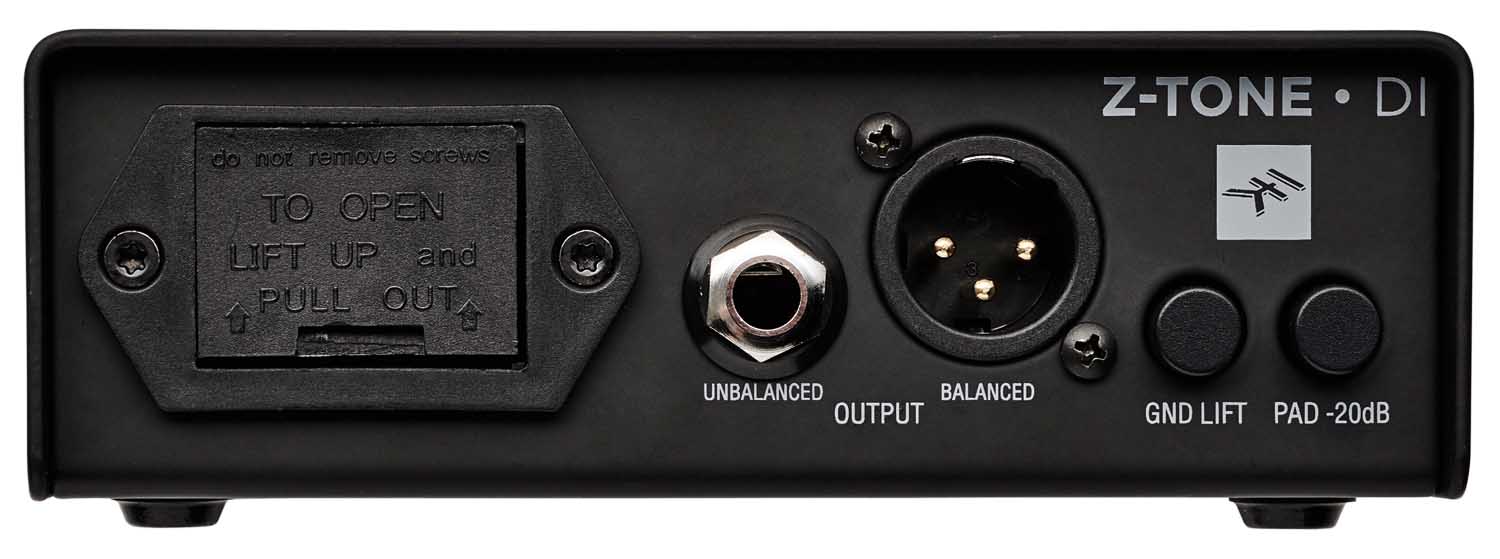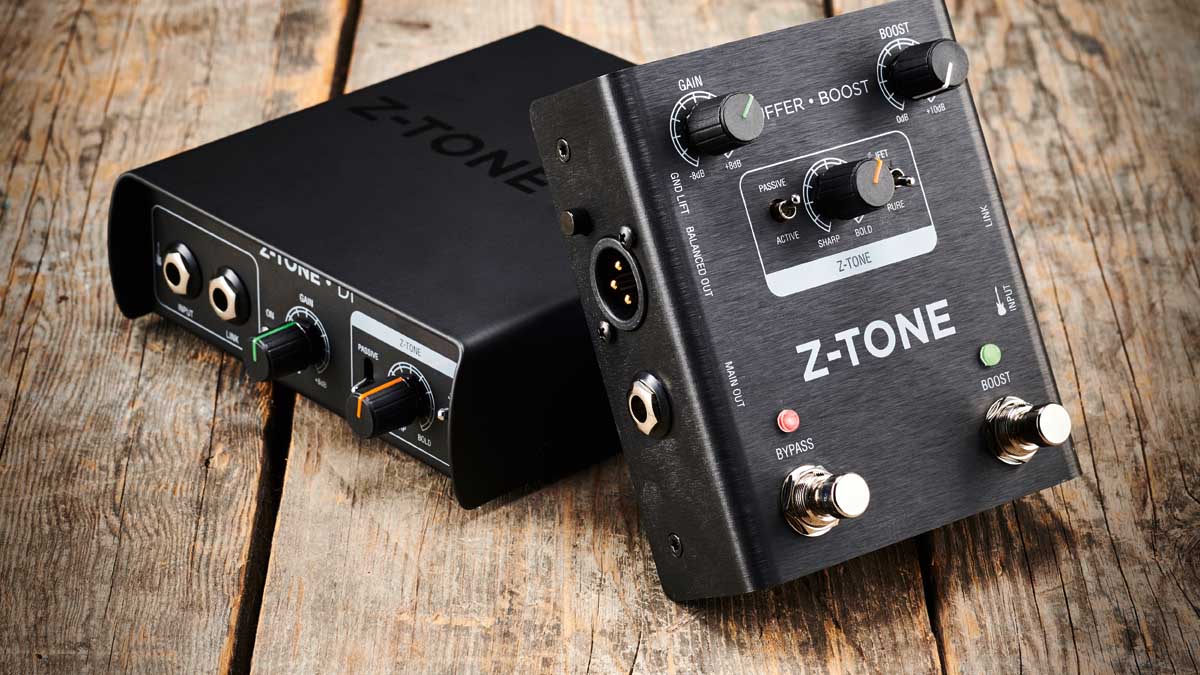Guitar World Verdict
The Z-Tone has enhancements that would really benefit a guitarist’s studio while the Z-Tone Buffer Boost packs a massive amount of utility in one pedal. It's an asset for your pedalboard with practical recording capabilities, too.
Pros
- +
Practical tools for studio and the stage.
- +
Z-Tone DI has sensible routing for belt-and-braces recording.
- +
Decent array of outputs.
Cons
- -
The Z-Tone Buffer Boost has the outputs – do you need the DI?
You can trust Guitar World
Last year, IK Multimedia, maker of the AmpliTube amp and effects software, released the AXE I/O, a USB audio interface specifically designed for guitar players.
The unique aspect of that unit is that rather than just having a bog-standard hi-Z (high impedance) input as provided for guitar use on many interfaces, it offers a range of options.
You can set it for either active or passive pickups, choose optional JFET circuitry for the preamp and set the impedance to best suit your pickups using the variable Z-Tone knob.
The Z-Tone Buffer Boost will always function as a buffer for your pedalboard but its footswitch offers the preamp tonal shaping of the AXE I/O
The AXE I/O has now spawned two smaller utility units – the Z-Tone Buffer Boost and Z-Tone DI – which may be ideal for guitarists who wish to take advantage of the enhanced gain-staging and tonal adjustment offered by those three aforementioned features but don’t need the USB audio capability of the AXE I/O.
With features suitable for live work and recording, the Z-Tone Buffer Boost’s stompbox form and footswitching should see it slip easily into a pedalboard slot, while the Z-Tone DI is a DI box with extra sauce.
Z-Tone Buffer Boost

The Z-Tone Buffer Boost will always function as a buffer for your pedalboard but its footswitch offers the preamp tonal shaping of the AXE I/O.
Set it to Pure and you get the unadulerated signal. Meanwhile, JFET will give you a subtly different tone, nicely enhanced with a little extra top-end.
It’s the Z-Tone knob that makes the most tonal difference here, though, because it changes the impedance at the input. Fully left you get the most treble but advancing the knob subdues the top-end and thickens things up.
The pedal could be used for ‘always on’ tonal shaping but as a footswitchable ‘effect’ it can offer an instant alternative tone, with or without a boost
The pedal could be used for ‘always on’ tonal shaping but as a footswitchable ‘effect’ it can offer an instant alternative tone, with or without a boost, via the Gain knob and/or the second footswitch, which can bring in up to 10dB of clean boost.
Alternatively, set up a neutral sound and just use it as a boost. Extra outputs endow real versatility – the Link to create a parallel signal path and the balanced XLR for direct clean guitar recording.
Z-Tone DI
Dull, perhaps, but necessary, the humble DI box is mainly used as an interface that takes the sound from an instrument and outputs it via an XLR cable in a form suitable for the balanced mic inputs on a mixing desk or audio interface.
While anyone who gigs regularly with an electro-acoustic guitar will be aware that it’s the thing they have to plug into to get the sound into the PA, it’s also a useful tool for recording electric guitar, especially as a cleanly recorded direct signal is an asset that you can later mould with amp sims.


With the facilities here you can tailor that clean sound just so. The sensible belt-and-braces approach of recording both a clean dry signal as well as your mic’d amp is easily carried out with this box first in the chain, with its Link output feeding your amp.
You can, however, do that with the Buffer Boost pedal, so unless you specifically need a DI box, the added footswitching may not be worth the extra outlay
Specs
Z-Tone Buffer Boost
- PRICE: $149 / £175
- ORIGIN: Italy
- TYPE: Buffer and boost pedal
- FEATURES: Buffered bypass, adjustable impedance, JFET preamp
- CONTROLS: Gain, Boost, Z-Tone, Passive/Active switch, JFET/Pure switch, Boost footswitch, Bypass footswitch, Ground Lift switch
- CONNECTIONS: Standard guitar input, standard main output, standard Link, Balanced XLR output
- POWER: 9V battery, 9V DC adaptor (not supplied), 48v phantom power
- DIMENSIONS: 105 (w) x 120 (d) x 55mm (h)
Z-Tone DI
- PRICE: $129 / £159
- ORIGIN: Italy
- TYPE: DI box
- FEATURES: Adjustable impedance, JFET preamp
- CONTROLS: Gain, Z-Tone, Passive/Active switch, JFET/Pure switch, Ground Lift switch, -20dB Pad switch
- CONNECTIONS: Standard guitar input, standard unbalanced output, standard Link, Balanced XLR output
- POWER: 9V battery or 48V phantom power
- DIMENSIONS: 135 (w) x 158 (d) x 48mm (h)
- CONTACT: IK Multimedia
Trevor Curwen has played guitar for several decades – he's also mimed it on the UK's Top of the Pops. Much of his working life, though, has been spent behind the mixing desk, during which time he has built up a solid collection of the guitars, amps and pedals needed to cover just about any studio session. He writes pedal reviews for Guitarist and has contributed to Total Guitar, MusicRadar and Future Music among others.
“Sonically excellent… we found that it could be a viable substitute for our vintage 1970s pedals”: Hamstead x That Pedal Show Redwing Analogue Stereo Modulator review
“The original Jordan Boss Tone was probably used by four out of five garage bands in the late ’60s”: Unpacking the gnarly magic of the Jordan Boss Tone – an actual guitar plug-in that delivers Dan Auerbach-approved fuzz












